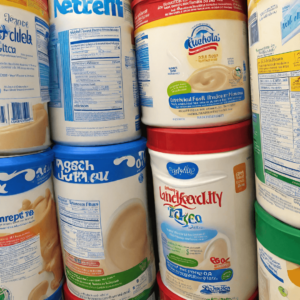Copper Demand forecast Surges as Global Headwinds Test Economic Growth in 2023
Introduction
The global copper industry is currently experiencing a surge in demand as economic growth faces challenges from various global headwinds. As the world strives to recover from the impacts of the COVID-19 pandemic, copper’s importance as a key industrial metal has become even more evident. In this article, we will explore the factors driving the increased demand for copper, the impact on the global economy, and the potential opportunities that lie ahead for the copper market.
The Role of Copper in the Global Economy
Copper is often referred to as the “red metal” due to its distinctive color. Its versatility and conductivity make it an essential component in various industries, including construction, electronics, transportation, and power generation. This metal is used in a wide range of applications such as wiring, plumbing, and electrical appliances, making it a vital component of modern infrastructure.
The demand for copper is intricately linked to global economic growth. As economies expand, the need for copper rises, driven by infrastructure projects, urbanization, and technological advancements. Increased copper consumption is particularly prominent in emerging economies, such as China and India, where rapid industrialization and urban development are taking place.
Surging Demand for Domestic Copper
In recent years, there has been a significant increase in the demand for domestic copper. As countries aim to reduce their reliance on international suppliers and build self-sufficiency, the importance of domestic copper production has grown. This trend has been accelerated by the disruptions caused by the COVID-19 pandemic, which highlighted the vulnerabilities of global supply chains.
One of the key factors driving the surge in demand for domestic copper is the push for renewable energy sources. The transition towards clean energy technologies, such as solar panels and wind turbines, requires a substantial amount of copper. This provides an opportunity for countries with domestic copper resources to capitalize on the growing green energy sector and reduce their dependence on imported copper.
Moreover, the global shift towards electric vehicles (EVs) is increasing the demand for copper. EVs require significantly more copper than conventional internal combustion engine vehicles, as copper is used in the electric motors, batteries, and charging infrastructure. With governments around the world setting ambitious targets for EV adoption, the demand for copper is expected to rise even further.
Challenges and Risks in the Copper Market
While the surge in demand for copper presents promising opportunities, it also brings challenges and risks. One of the main concerns is the potential supply deficit. As demand outpaces supply, there is a risk of limited availability and rising prices. This could lead to supply chain disruptions and hinder economic growth, particularly for countries heavily reliant on copper imports.
In addition, geopolitical tensions and trade disputes can impact the copper market. Countries heavily reliant on copper exports may face uncertainties due to tariffs, trade restrictions, and market fluctuations. It is crucial for copper-producing nations to diversify their customer base and establish strong trade relationships to minimize vulnerability to external shocks.
Another challenge facing the copper industry is environmental sustainability. Copper mining and production can have significant environmental impacts, including habitat destruction, water pollution, and carbon emissions. To ensure long-term sustainability, stakeholders must prioritize responsible mining practices, invest in cleaner technologies, and promote recycling and circular economy initiatives.
Opportunities and the Future of the Copper Market
Despite the challenges, the future of the copper market is bright. The increasing demand for copper in renewable energy technologies and EVs presents long-term growth prospects. Policymakers and industry players have recognized the importance of copper and are taking steps to support its sustainable production and consumption.
Investments in infrastructure development, particularly in emerging economies, will continue to drive copper demand. Various countries have announced ambitious infrastructure plans, such as China’s Belt and Road Initiative and the United States’ proposed infrastructure investments. These initiatives are expected to boost the demand for copper and stimulate economic growth.
Furthermore, advancements in copper recycling technologies offer additional opportunities. Recycling copper reduces the need for primary copper extraction and helps to meet growing demand sustainably. Governments and industries should incentivize and invest in recycling infrastructure to harness the potential of this circular economy approach.
Conclusion
The surging demand for copper amidst global headwinds underscores the metal’s crucial role in the global economy. As countries strive for economic recovery and sustainable development, the importance of domestic copper production and responsible mining practices cannot be overstated. By addressing challenges, embracing opportunities, and fostering collaboration among stakeholders, the copper industry can pave the way for a resilient, green, and prosperous future.
The Crucial Role of Early Human Lung Immune Cell Development in Epithelial Cell Fate
UK on high alert: Winter bug outbreak intensifies before Christmas

